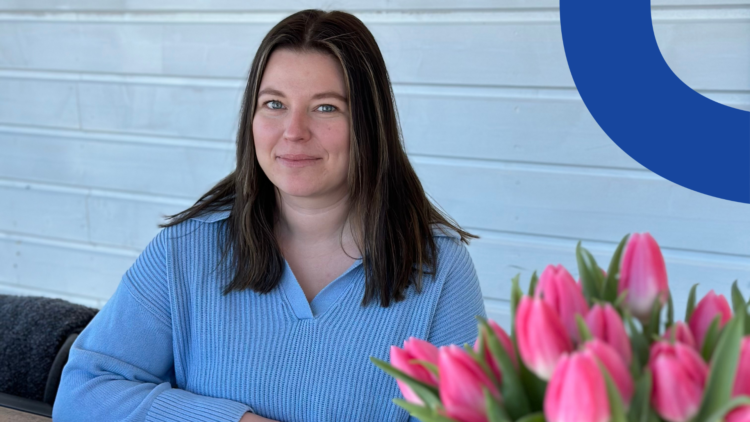Petra Raiskinmäki helps professionals identify intimate partner violence

Petra Raiskinmäki coordinates the work of the wellbeing services county when it comes to preventing, among other things, mental, physical, financial and sexual intimate partner violence. Her working time is divided between working as a social counsellor in the substance abuse service and violence prevention work.
Raiskinmäki trains, for example, nursing staff and school staff to recognise how violence can manifest and the type of help that staff can offer to both those exposed to violence and those who have used violence.
– It is typical that violence increases gradually and that there are calmer and heavier phases. That’s why it’s hard for a victim to break free from a harmful relationship without the help of an outsider, says Raiskinmäki.
The Wellbeing Services County of Ostrobothnia has recently established, together with the authorities and the third sector, a working group to prevent intimate partner violence.
– We are working to increase multi-professional cooperation, so that the victim and the perpetrator get the help they need more smoothly. In this way, the person seeking help does not have to be bombarded by different parties.
Attitudes must change
The school health survey shows that more than 17 per cent of fourth and fifth graders in our wellbeing services county have experienced physical violence by a parent or other close adult. Furthermore, 35.6 per cent had experienced mental violence.
– Families are very burdened, and support from the surrounding environment has decreased. We need to start talking about harmful behaviour openly and the ability to resolve conflicts needs to be improved so that we can break the cycle of violence.
Raiskinmäki suspects that a significant part of intimate partner violence remains hidden. She calls for changing attitudes and more resources for families.
– Sometimes violence can be seen as a normal part of a relationship or even as a way to raise children or resolve conflicts. Together we have to change this.
A big mental and financial price tag
If you suspect that someone is a victim of intimate partner violence, you must have the courage to intervene. You should also proceed with caution in this matter. For example, you can say to the person: “I have noticed that you are not feeling very well. Is there a reason for that?”
– Listen to what the person says about their situation, and don’t underestimate their experience. Reassure the person that they should be in a safe and respectful relationship.
Warning bells should start ringing, for example, when a previously active person no longer keeps in touch, does not participate in various events or has to be home at a certain time. However, not all disagreements meet the criteria of violence. You can disagree about things in a matter-of-fact way.
– When arguing constructively, there are two equal parties in the argument, both of whom are allowed to express their opinion and stand behind it. In a violent relationship, one party does not dare to express their own position for fear of the other’s reaction.
A friend or loved one can help a victim of violence to contact, for example, a shelter, social welfare or family counselling.
– Support the victim throughout the process, even if it takes time for them to decide whether to leave the relationship or even return to it.
Intimate relationship violence causes a lot of human suffering and increases the risk of getting sick mentally and physically. According to the Finnish Institute of Health and Welfare (THL), intimate partner violence causes 150 million euros in direct costs to healthcare each year. Violence also increases the costs of social and legal services.